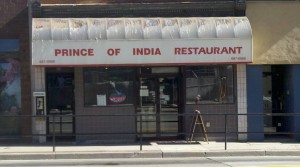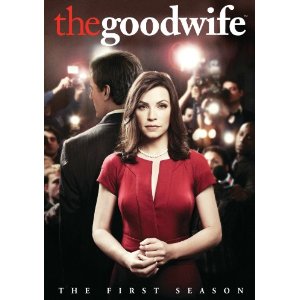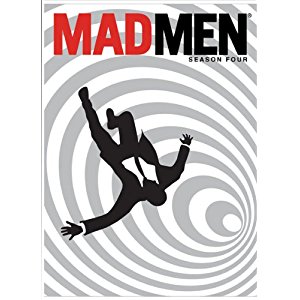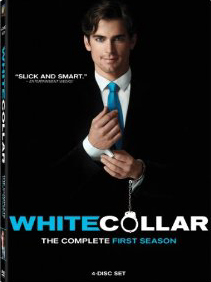I’m a little behind on my summer reading list. First I read Ivan Turgenev’s “Sketches from a Hunter’s Album,” a classic short story collection from 19th-century Russia. I would recommend it. Turgenev was the first noble author to write about peasant characters as though they were people; also, his descriptions of the natural world are moving and transporting. And if you yourself are, or aspire to be, a writer, you should not go forward without reading “Bezhin Lea” - its composition is basically perfect.
 From Turgenev I turned to Ian Frazier’s “Travels in Siberia”. I hadn’t read any of Frazier’s past work, but I gathered from reviews of this book that he had gained fame for travel writing in the U.S., and that his trips through Siberia were equally entertaining. I love nonfiction, and I love travel writing - there are many places in the world I don’t anticipate getting to see first-hand, and it’s nice to get a glimpse of them through others’ accounts of their sojourns.
From Turgenev I turned to Ian Frazier’s “Travels in Siberia”. I hadn’t read any of Frazier’s past work, but I gathered from reviews of this book that he had gained fame for travel writing in the U.S., and that his trips through Siberia were equally entertaining. I love nonfiction, and I love travel writing - there are many places in the world I don’t anticipate getting to see first-hand, and it’s nice to get a glimpse of them through others’ accounts of their sojourns.
The book is about Frazier’s encounters with Siberia. He traveled to Russia for the first time in the early ’90s, and claims to have been beset with a kind of mystical “Russia-love.” He vowed to return, particularly to Siberia, which he became fascinated by through reading. He approaches Russia via Alaska in the ’90s, then returns for a full-length drive across Siberia with two guides in 2001. He makes a cold-weather sojourn several years later, and the book recounts all of these trips. The majority of the book is concerned with the extended 2001 road trip.
Frazier has done a lot of reading and research into the history of Siberia and its major players, and I found the parts of the book where he has condensed this research to be interesting; likewise, I found interesting his descriptions of the places and natural environments he moves through as he travels.
About a third of the way through the book, however, I realized that I wasn’t enjoying the reading experience at all. It took me a few more pages of consideration, but then I realized why: I hate Ian Frazier.
Don’t misunderstand, I’ve never met the guy. But his book is a nonfiction, first-person account, and so obviously, you get to know the author as you read. And he’s … awful. He doesn’t seem to realize this, but as a traveling companion, Ian Frazier is just awful.
Most notably he is irritatingly nervous about everything. Yes, Siberia is a place where much could go wrong, and I can tell you from experience that it can be a little nervewracking to travel through a country where basically no one speaks English, and you speak none of the native tongue (though Frazier seems to know basic Russian, whereas I, when in Panama, knew no more than 10 words of Spanish, none of which involved negotiating taxi fares). But Frazier is well-outfitted, well-funded, and guided by two men who both speak fluent English. And yet he worries. Incessantly and obsessively, about things that seem not to merit any concern at all. When they camp near a ferry stop (one must camp in most of Siberia) he worries that his tent will be run over in the night by a vehicle coming to wait for the ferry. When they must travel with their van in a train car over a roadless stretch of territory, he worries for three days straight that there are not enough safety precautions, and the cars are full of gas, and what happens if one of them spontaneously explodes? He experiences a bout of food poisoning in St. Petersburg, and thereafter never eats a meal without worrying that it will murder him. He frets CONSTANTLY over the fact that Russians don’t wear seatbelts, even though the guides have provided a seatbelt for him! He panics when his guides are late returning to camp from a trip to a nearby village. This is but a sampling; his obsessive, half-irrational fears are chronicled on nearly every page of the book.
Besides these endless worries, and probably because of them, Frazier barely engages with the actual people and life of Siberia. His guides frequently visit the villages they camp near, for supplies but also for socializing; Frazier never accompanies them, staying by himself in the campsite. When he is offered vodka, he refuses. I can say authoritatively: unless you are a recovering alcoholic, or have a religious prohibition on its consumption, if a Slav offers you vodka, you should drink it. I’m not saying get wasted - but take one shot. Because it’s very rude if you don’t. This doesn’t seem to phase Frazier a bit. If he is a recovering alcoholic, and has not mentioned this fact in his book, I retract my statement. But I doubt that’s the case. Frazier turns down an offer for lunch from a random passerby who knows English and seems happy to meet an American; he often seems awkward and bored when Siberians in off-the-map places put on programs for the American author who has come, they think, to chronicle them. In all, Frazier seems much more interested in retracing the steps of the explorers of a hundred years ago that he has read about simply for the sake of doing so, rather than experiencing the Russia of here-and-now. I found myself wondering over and over again, Why would this person go to Siberia if Siberia as it is seems to leave him terrified and disinterested? Reading books would have more than sufficed for his purposes.
Besides all this, he is unpleasant in other ways. Let me illustrate with an incident he recounts without comment: he is in a regional museum in a Siberian city. Another man, an Englishman, approaches him, having heard him speaking English, and, in a friendly manner, asks him where he’s from. Frazier, who is from New Jersey, tells the man that he is from London. He says, “I didn’t even bother to put on an accent.” Obviously skeptical, the Englishman asks where in London; Frazier replies that he lives in a neighborhood by the Thames that the Englishman probably hasn’t heard of. Pushing on, the Englishman offers his name and the fact that he is writing a book. Frazier offers none of the same information, and shrugs the encounter off. End scene.
What the fuck is that? Does Frazier think it was a joke? Why would you be rude to the first person besides your guides that you have encountered in Siberia who speaks your language? Why would you recount the incident in your book? Does Frazier think he is a wit? I’m literally perplexed by his account of this encounter. What an ass.
[As an aside, Frazier notes that the man’s name is Simon Richmond, and says that Richmond exclaimed that he was going to put Frazier in his book. An internet search reveals that there is a Brit named Simon Richmond who authors and co-author’s Lonely Planet guidebooks, including one on the Trans-Siberian Railway and one on Russia in general. I do not know if he put Ian Frazier in one of these, but I feel inclined to buy one on principle - Richmond, I’m sure, deserves my money much more than Frazier did for his book.]
Frazier’s an ass on other occasions, apparently without realizing it. He’s also maudlin, overly nostalgic for his youth in Ohio, and deeply self-centered, irritatedly demanding that his guides take him to abandoned prison camps even though they’re clearly made very uncomfortable by this. In general, Frazier is preoccupied with his own needs and expectations … “privileged” is a word that kept recurring to my mind. And then we have this garbage, written after the passage in which the reader learns that Frazier coincidentally finished his Siberian road trip on September 11, 2001:
“But out in the rest of the actual world, people were thinking about us, in a larger sense, and specifically about [the World Trade Center]. The attack that targeted it represented not so much the beginning of a new war as a cruelly and ingeniously updated new wrinkle in an old, old war, one going back almost to the beginning of Islam. The recently ended Cold War, in whose ruins Sergei and Volodya and I had been wandering would have been difficult to explain to ancient ghosts who knew nothing about twentieth-century physics. But the September 11 attacks would have made perfect sense to, say, Saladin: the flying machines, the proud towers, the slaughtered innocents, the suicidal believers, are a simple story that exists out of time. To Yermak and the other Christian conquerors of Siberia’s Muslim khan, September 11 would have been easily understandable, and perhaps further inducement to victory, had they heard its story while gathered around their smoky Tobol River campfires.”
So. The conflation of modern-day Muslims with their ancient predecessors, exoticizing them and construing them as unevolving, ahistoric savages? Check! The depiction of terrorism and religious bigotry as a universal truth for all Muslims, in the past and present? Check! Bonus construal of the 9/11 attacks and America’s response to them as a religious war rather than a geopolitical one, thus casting all members of the “opposing” Muslim religion as combatants? Check and check!
People, that’s racism.
In summary, “Travels in Siberia”, though containing interesting facts, was a nightmare to read, basically because Ian Frazier seems like a nightmare to spend time with. The fact that he does not appear to realize that fact at all is mildly fascinating, but not fascinating enough to sustain a reader through 471 pages. Feel free to skip this book.
 First of all, to say that Zaiaka can be found in Monroeville (as their website does) is more than an exaggeration. Luckily Sabrina knew where it was because it took much driving beyond Monroeville to reach its Holiday Park location. We arrived around 1:00pm, having called earlier that day to ascertain that the buffet ran until 3:00pm.
First of all, to say that Zaiaka can be found in Monroeville (as their website does) is more than an exaggeration. Luckily Sabrina knew where it was because it took much driving beyond Monroeville to reach its Holiday Park location. We arrived around 1:00pm, having called earlier that day to ascertain that the buffet ran until 3:00pm.







